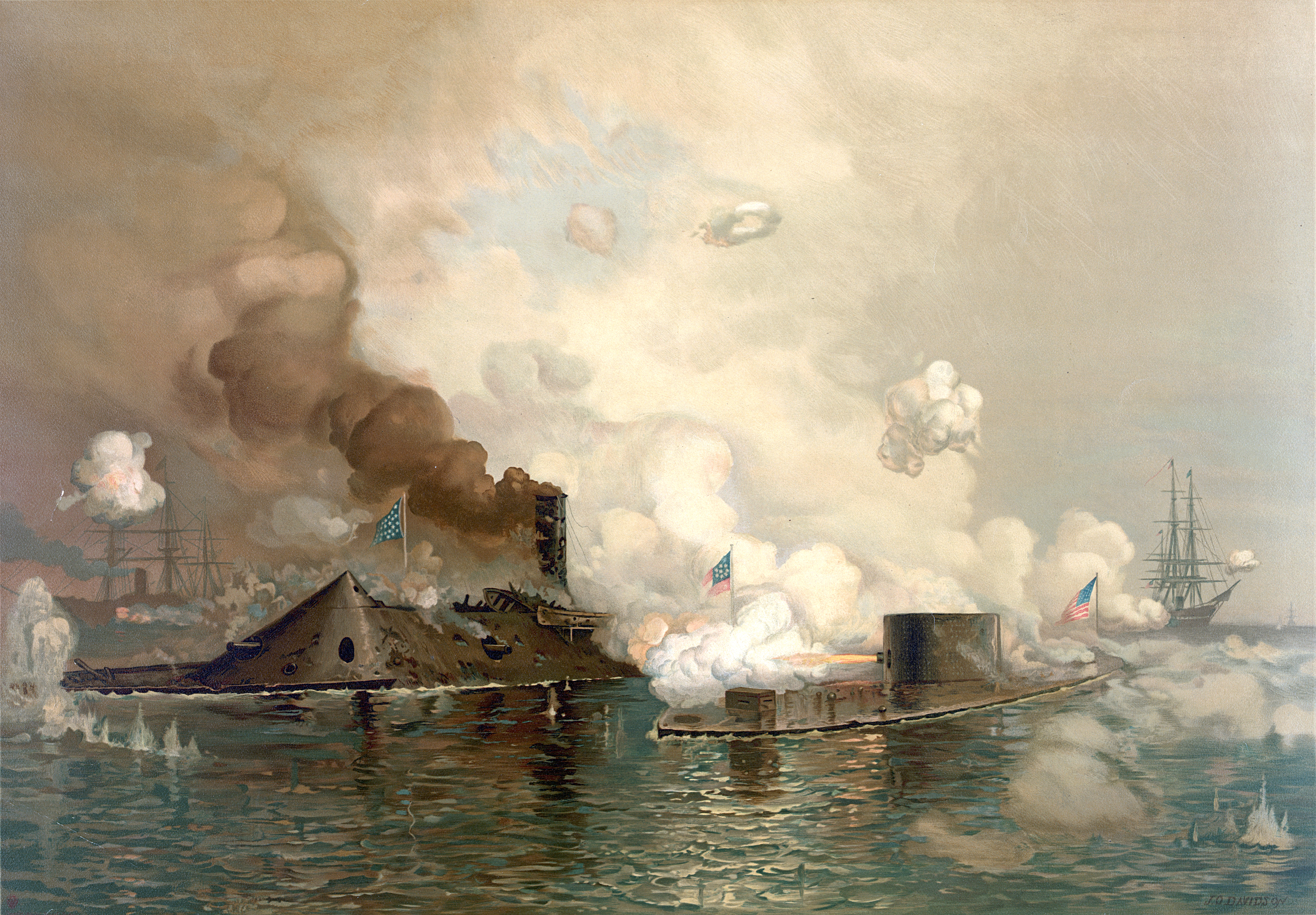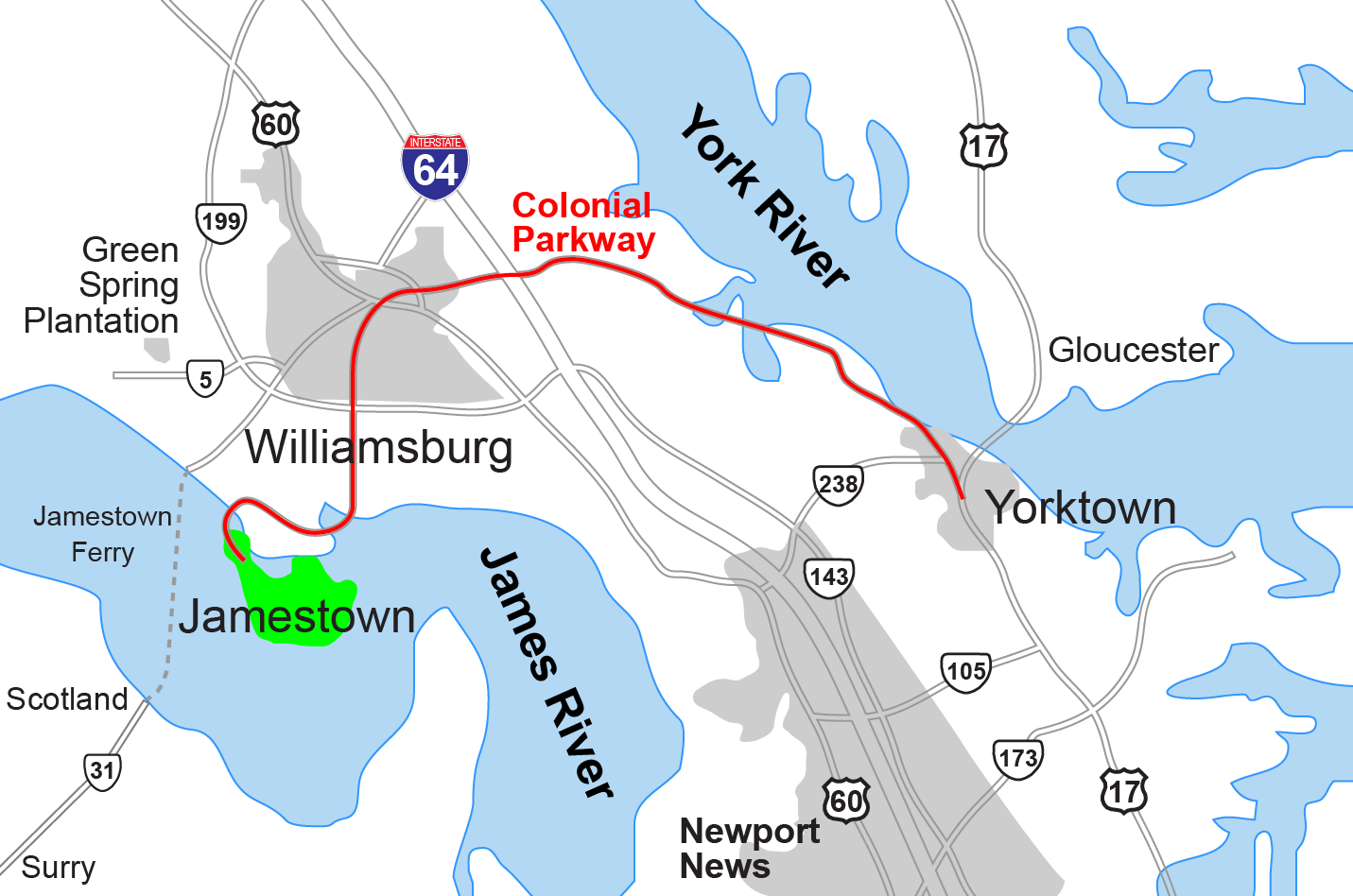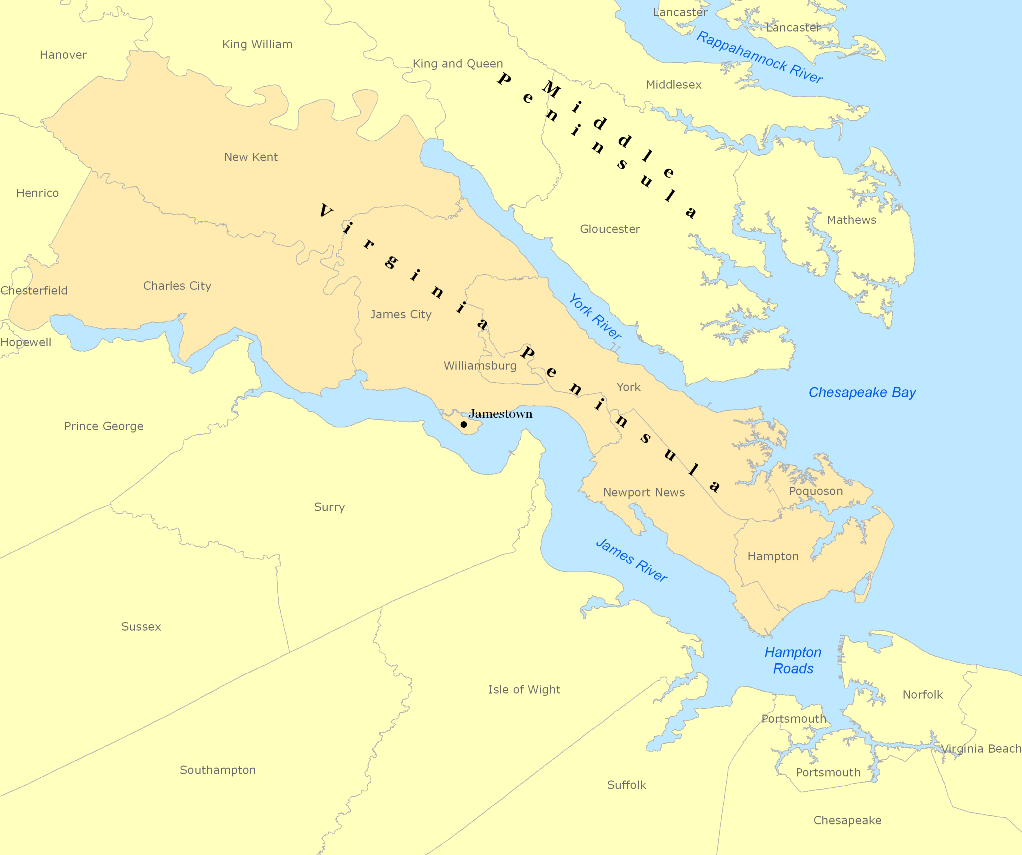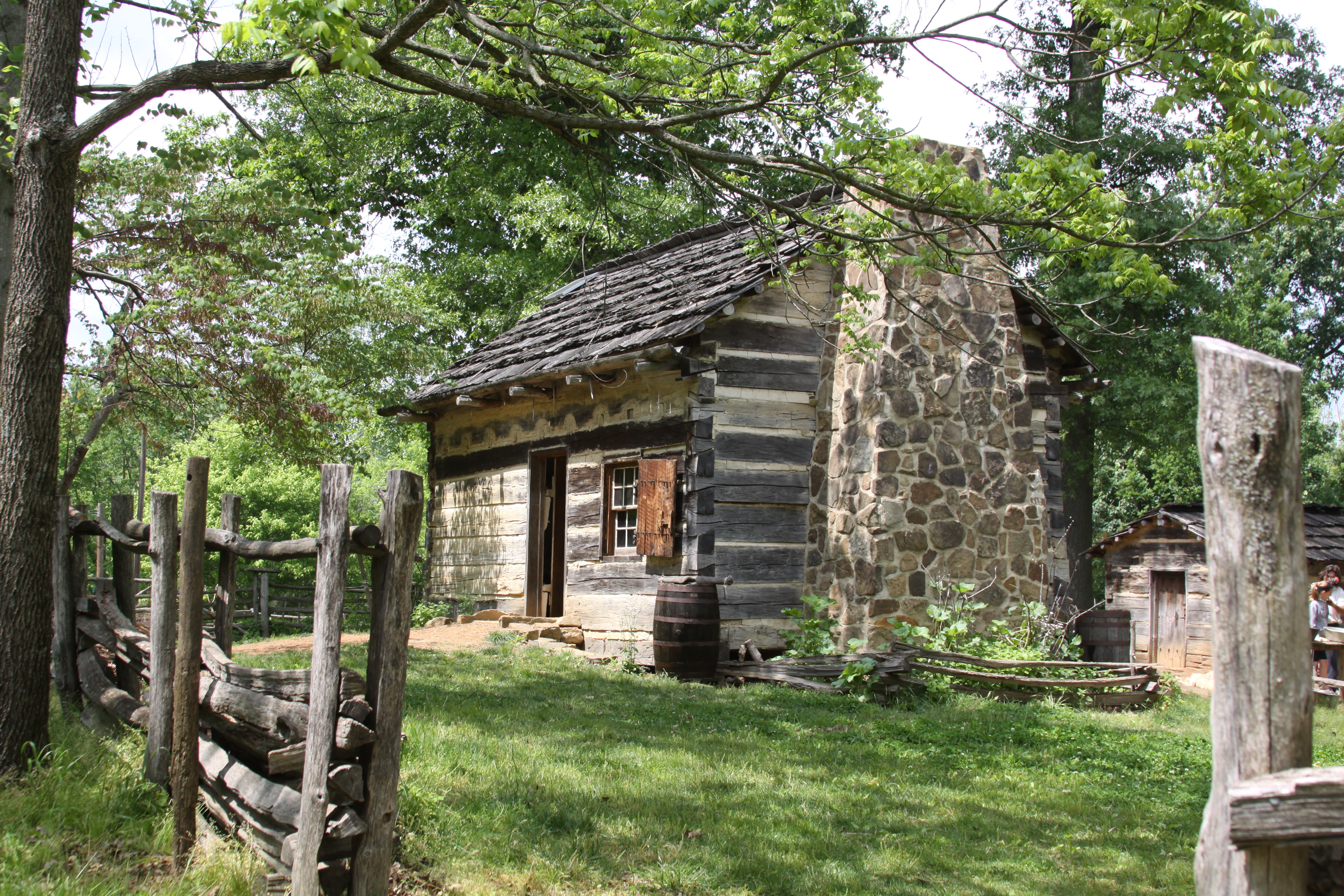|
Kingsmill, Virginia
Kingsmill is a geographic area in James City County, Virginia, that includes a large planned residential community, a resort complex, a theme park, a brewery, and a commercial park. The Kingsmill area is between the north bank of the James River just east (downstream) of the site where the first permanent English settlement in North America at Jamestown was established in 1607 and Interstate Highway 64. Highway access to most of the area's businesses and attractions is from U.S. Route 60 between the eastern city limits of Williamsburg and the adjacent community of Grove, or from Virginia State Route 199, which forms a semi-circular beltway of sorts around Williamsburg's southern side. History Kingsmill Plantation A prominent member of the Virginia Company, Richard Kingsmill, became the namesake of the Kingsmill Plantation. The Virginia Company was a for-profit organization chartered in England which was charged with the founding and settlement of Virginia under the reign of K ... [...More Info...] [...Related Items...] OR: [Wikipedia] [Google] [Baidu] |
James City County, Virginia
James City County is a county (United States), county located in the Commonwealth of Virginia. As of the 2020 United States Census, 2020 census, the population was 78,254. Although politically separate from the county, the county seat is the adjacent independent city of Williamsburg, Virginia, Williamsburg. Located on the Virginia Peninsula, James City County is included in the Virginia Beach, Virginia, Virginia Beach-Norfolk, Virginia, Norfolk-Newport News, Virginia, Newport News, VA-North Carolina, NC Hampton Roads, Metropolitan Statistical Area. It is often associated with Williamsburg, Virginia, Williamsburg, an Independent city (United States), independent city, and Jamestown, Virginia, Jamestown which is within the county. First settled by the English colonists in 1607 at Jamestown, Virginia, Jamestown in the Virginia Colony, the County was formally created in 1634 as James City Shire by order of King Charles I of England, Charles I. James City County is considered one of ... [...More Info...] [...Related Items...] OR: [Wikipedia] [Google] [Baidu] |
Quarterpath Road
Quarterpath Road is one of the oldest roads in James City County, Virginia, James City County and the independent city of Williamsburg, Virginia. History Colonial era Established in the 17th century, Quarterpath Road extended from Middle Plantation (Virginia), Middle Plantation (renamed Williamsburg, Virginia, Williamsburg in 1699) through what later became Kingsmill, Virginia, Kingsmill Plantation to Burwell's Landing on the James River (Virginia), James River, a few miles east of Jamestown, Virginia, Jamestown. The Burwells were among the First Families of Virginia in the Colony of Virginia, and built the plantation's manor house beginning in the 1730s. A few years later, Carter Burwell built Carter's Grove immediately to the east in what became the modern day Grove, Virginia, Grove Community. For many years, the Quarterpath Road was the most direct route between Williamsburg and the landing on the James River at Burwell's which was east of Jamestown and more convenient to the Che ... [...More Info...] [...Related Items...] OR: [Wikipedia] [Google] [Baidu] |
Drewry's Bluff
Drewry's Bluff is located in northeastern Chesterfield County, Virginia, in the United States. It was the site of Confederate Fort Darling during the American Civil War. It was named for a local landowner, Confederate Captain Augustus H. Drewry, who owned the property. At Richmond, Virginia, location of the fall line at the head of navigation, the generally west-to-east course of the James River turns almost due south for a distance of about before turning eastward again towards the Chesapeake Bay. At this sharp bend, Drewry's Bluff on the west side of the James River rose above the water, commanding a view of several miles' distance downstream and making it a logical site for defensive fortifications. During the American Civil War On March 17, 1862, the men of Captain Drewry's Southside Artillery arrived at the bluff and began fortifying the area. They constructed earthworks, erected barracks, dug artillery emplacements, and mounted three large seacoast guns (one 10-inch ... [...More Info...] [...Related Items...] OR: [Wikipedia] [Google] [Baidu] |
Norfolk Naval Shipyard
The Norfolk Naval Shipyard, often called the Norfolk Navy Yard and abbreviated as NNSY, is a U.S. Navy facility in Portsmouth, Virginia, for building, remodeling and repairing the Navy's ships. It is the oldest and largest industrial facility that belongs to the U.S. Navy as well as the most comprehensive. Located on the Elizabeth River, the yard is just a short distance upriver from its mouth at Hampton Roads. It was established as Gosport Shipyard in 1767. Destroyed during the American Revolutionary War, it was rebuilt and became home to the first operational drydock in the United States in the 1830s. Changing hands during the American Civil War, it served the Confederate States Navy until it was again destroyed in 1862, when it was given its current name. The shipyard was again rebuilt, and has continued operation through the present day. History British control The Gosport Shipyard was founded on November 1, 1767 by Andrew Sprowle on the western shore of the Elizabeth Rive ... [...More Info...] [...Related Items...] OR: [Wikipedia] [Google] [Baidu] |
Ironclad Warship
An ironclad is a steam engine, steam-propelled warship protected by Wrought iron, iron or steel iron armor, armor plates, constructed from 1859 to the early 1890s. The ironclad was developed as a result of the vulnerability of wooden warships to explosive or incendiary shell (projectile), shells. The first ironclad battleship, , was launched by the French Navy in November 1859 - narrowly pre-empting the British Royal Navy. They were first used in warfare in 1862 during the American Civil War, when ironclads operated against wooden ships and, in a historic confrontation, against each other at the Battle of Hampton Roads in Virginia. Their performance demonstrated that the ironclad had replaced the unarmored ship of the line as the most powerful warship afloat. City-class ironclad, Ironclad gunboats became very successful in the American Civil War. Ironclads were designed for several uses, including as high seas battleships, long-range cruisers, and Littoral (military), coast ... [...More Info...] [...Related Items...] OR: [Wikipedia] [Google] [Baidu] |
Battle Of Hampton Roads
The Battle of Hampton Roads, also referred to as the Battle of the ''Monitor'' and ''Virginia'' (rebuilt and renamed from the USS ''Merrimack'') or the Battle of Ironclads, was a naval battle during the American Civil War. It was fought over two days, March 8–9, 1862, in Hampton Roads, a roadstead in Virginia where the Elizabeth and Nansemond rivers meet the James River just before it enters Chesapeake Bay adjacent to the city of Norfolk. The battle was a part of the effort of the Confederacy to break the Union blockade, which had cut off Virginia's largest cities and major industrial centers, Norfolk and Richmond, from international trade.Musicant 1995, pp. 134–178; Anderson 1962, pp. 71–77; Tucker 2006, p. 151. This battle has major significance because it was the first meeting in combat of ironclad warships, and . The Confederate fleet consisted of the ironclad ram ''Virginia'' (built from the remnants of the burned steam frigate , newest warship for the United St ... [...More Info...] [...Related Items...] OR: [Wikipedia] [Google] [Baidu] |
Hampton Roads
Hampton Roads is the name of both a body of water in the United States that serves as a wide channel for the James River, James, Nansemond River, Nansemond and Elizabeth River (Virginia), Elizabeth rivers between Old Point Comfort and Sewell's Point where the Chesapeake Bay flows into the Atlantic Ocean, and the surrounding metropolitan region located in the southeastern Virginia and northeastern North Carolina portions of the Tidewater (region), Tidewater Region. Comprising the Virginia Beach–Norfolk–Newport News, VA–NC, metropolitan area and an extended combined statistical area that includes the Elizabeth City, North Carolina micropolitan area, Elizabeth City, North Carolina, micropolitan statistical area and Dare County, North Carolina, Kill Devil Hills, North Carolina, micropolitan statistical area, Hampton Roads is known for its large military presence, ice-free harbor, shipyards, coal piers, and miles of waterfront property and beaches, all of which contribute to th ... [...More Info...] [...Related Items...] OR: [Wikipedia] [Google] [Baidu] |
Virginia Peninsula
The Virginia Peninsula is a peninsula in southeast Virginia, USA, bounded by the York River, James River, Hampton Roads and Chesapeake Bay. It is sometimes known as the ''Lower Peninsula'' to distinguish it from two other peninsulas to the north, the Middle Peninsula and the Northern Neck. It is the site of historic Jamestown, founded in 1607 as the first English settlement in North America. Geographically located at the northwestern reaches, Charles City and New Kent counties are part of the Virginia Peninsula. In the 21st century, they are also considered part of the Richmond–Petersburg region. The rest of the Virginia Peninsula is all part of the Virginia Beach–Norfolk–Newport News, VA–NC MSA (metropolitan statistical area) with a population of about 1.8 million. The Hampton Roads MSA is the common name for the metropolitan area that surrounds the body of water of the same name. It is the seventh-largest metropolitan area in the Southeast and the 32nd larg ... [...More Info...] [...Related Items...] OR: [Wikipedia] [Google] [Baidu] |
Fort Monroe
Fort Monroe, managed by partnership between the Fort Monroe Authority for the Commonwealth of Virginia, the National Park Service as the Fort Monroe National Monument, and the City of Hampton, is a former military installation in Hampton, Virginia, at Old Point Comfort, the southern tip of the Virginia Peninsula, United States. Along with Fort Wool, Fort Monroe originally guarded the navigation channel between the Chesapeake Bay and Hampton Roads—the natural roadstead at the confluence of the Elizabeth, the Nansemond and the James rivers. Union General George B. McClellan landed his forces at the fort during Peninsula campaign of 1862 during the American Civil War. Until disarmament in 1946, the areas protected by the fort were the entire Chesapeake Bay and Potomac River regions, including the water approaches to the cities of Washington, D.C. and Baltimore, Maryland, along with important shipyards and naval bases in the Hampton Roads area. Surrounded by a moat, the six ... [...More Info...] [...Related Items...] OR: [Wikipedia] [Google] [Baidu] |
Abraham Lincoln
Abraham Lincoln ( ; February 12, 1809 – April 15, 1865) was an American lawyer, politician, and statesman who served as the 16th president of the United States from 1861 until his assassination in 1865. Lincoln led the nation through the American Civil War and succeeded in preserving the Union, abolishing slavery, bolstering the federal government, and modernizing the U.S. economy. Lincoln was born into poverty in a log cabin in Kentucky and was raised on the frontier, primarily in Indiana. He was self-educated and became a lawyer, Whig Party leader, Illinois state legislator, and U.S. Congressman from Illinois. In 1849, he returned to his successful law practice in central Illinois. In 1854, he was angered by the Kansas–Nebraska Act, which opened the territories to slavery, and he re-entered politics. He soon became a leader of the new Republican Party. He reached a national audience in the 1858 Senate campaign debates against Stephen A. Douglas. L ... [...More Info...] [...Related Items...] OR: [Wikipedia] [Google] [Baidu] |
Confederate States Of America
The Confederate States of America (CSA), commonly referred to as the Confederate States or the Confederacy was an unrecognized breakaway republic in the Southern United States that existed from February 8, 1861, to May 9, 1865. The Confederacy comprised U.S. states that declared secession and warred against the United States during the American Civil War: South Carolina, Mississippi, Florida, Alabama, Georgia, Louisiana, Texas, Virginia, Arkansas, Tennessee, and North Carolina. Kentucky and Missouri also declared secession and had full representation in the Confederate Congress, though their territory was largely controlled by Union forces. The Confederacy was formed on February 8, 1861, by seven slave states: South Carolina, Mississippi, Florida, Alabama, Georgia, Louisiana, and Texas. All seven were in the Deep South region of the United States, whose economy was heavily dependent upon agriculture—particularly cotton—and a plantation system that relied ... [...More Info...] [...Related Items...] OR: [Wikipedia] [Google] [Baidu] |








